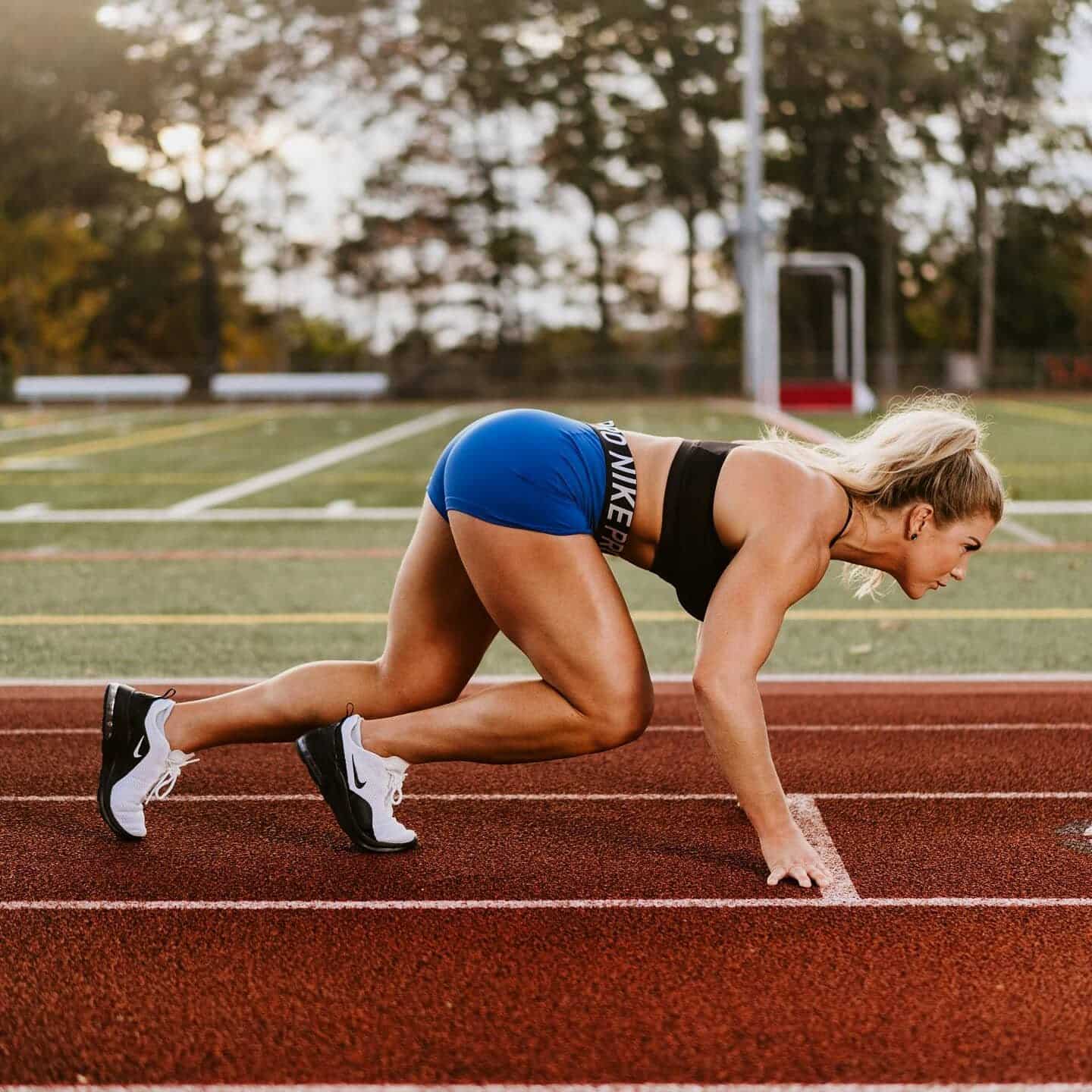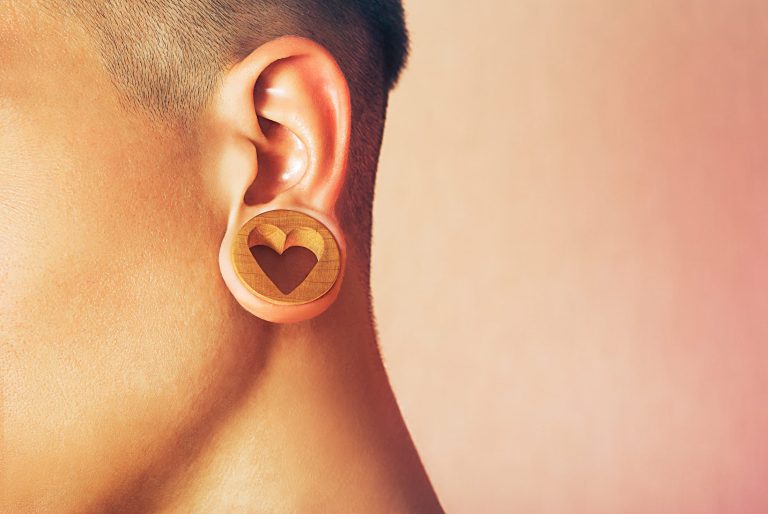Cellulite in Athletes: Understanding Causes and Treatment Options
Cellulite treatments for athletes are gaining attention. Many athletes struggle with cellulite despite their rigorous training. It can be frustrating to see those dimples when you work so hard. The good news is that effective solutions exist. From specialized creams to advanced therapies, options are available to help smooth out the skin. These treatments not only enhance appearance but also boost confidence, resulting in a positive bottom line. Addressing cellulite can improve overall well-being and performance. Understanding the best methods tailored for active lifestyles is crucial. Athletes deserve to feel great in their skin while excelling in their sport. Discover how targeted cellulite treatments can make a difference in your journey.
Key Takeaways
- Athletes should understand that cellulite can affect their performance and self-esteem, so recognizing its presence is the first step toward addressing it.
- Effective treatments like acoustic wave therapy and laser options can significantly reduce the appearance of cellulite, making them worth considering for athletes.
- Incorporating regular exercise and weight loss strategies can help manage and prevent cellulite, emphasizing the importance of a balanced fitness routine.
- Consulting with healthcare professionals or specialists can provide tailored advice on the best treatment options for individual needs.
- Evidence suggests that combining treatments with lifestyle changes yields better results, so athletes should adopt a comprehensive approach.
- Staying informed about the latest research and success stories in cellulite treatments can empower athletes to make educated decisions about their care.
Understanding Cellulite in Athletes
Causes of Cellulite
Cellulite is common among athletes. This condition occurs due to muscle development and low body fat. As athletes build muscle, the skin can appear uneven. The underlying structure changes, leading to visible cellulite.
Genetics plays a significant role in how cellulite develops. Some people are more prone to it than others. Hormonal factors also contribute to this issue. For instance, estrogen can affect fat distribution and skin elasticity.
Lifestyle choices impact cellulite as well. Diet, hydration, and exercise routines matter. Athletes who engage in high-intensity training may notice changes in their skin texture.
Types of Cellulite
Cellulite comes in different forms. It can range from mild to severe. Mild cellulite appears as subtle dimpling on the skin. In contrast, clinical cellulite shows more pronounced irregularities.
Athletes often experience dermopanniculosis deformans. This term describes a specific form of cellulite that affects the superficial fat layer. It leads to noticeable skin contour changes.
Health Implications
Cellulite is not a health risk for athletes. Many people view it as a cosmetic concern instead. This perception can lead to feelings of self-consciousness among athletes.
Understanding this distinction is crucial. While cellulite treatments exist, they focus on appearance rather than health improvement. Treatments include both invasive and non-invasive options.
Treatment Options
Athletes may seek various cellulite treatments. These can include creams designed to improve skin texture. However, results from topical treatments vary widely.
Invasive cellulite treatments offer different results. Procedures like liposuction or laser therapy target fat deposits directly. They aim to reduce the appearance of cellulite significantly.
A comprehensive cellulite treatment plan should consider individual needs. Factors like skin type and severity matter when choosing a method.
Impact on Athletic Performance
Muscle Function
Cellulite does not affect muscle function. It does not interfere with an athlete’s ability to perform. The presence of cellulite is simply a cosmetic concern. It forms beneath the skin when fat deposits push through connective tissue. This condition is common among many individuals, regardless of their fitness levels.
Athletes often have low body fat and high muscle mass. Therefore, they may experience cellulite even if they are in peak physical condition. The effect of cellulite on their performance is negligible. Athletes can still run, jump, and lift weights effectively.
Psychological Effects
The psychological impact of cellulite can be significant for athletes. Many may feel self-conscious about their appearance. This feeling can lead to decreased confidence during competitions or workouts. When athletes focus on how they look, it can distract them from their performance goals.
Athletes might worry about how others perceive them. This concern can cause anxiety and stress. They may spend time considering treatments instead of concentrating on training and competing. These thoughts can hinder their overall mental state.
Focus on Performance
Focusing on athletic performance is crucial for success. Athletes should prioritize their training over aesthetics. Performance should be the main goal, not appearance.
Caffeine is one substance that can enhance athletic performance. It improves endurance and reduces fatigue. Using caffeine strategically can help athletes achieve better results without worrying about cellulite.
Tough bands are another tool that athletes use for training. These bands improve strength and flexibility. They do not address cellulite directly but help maintain overall fitness.
Dermal atrophy is a condition where skin loses elasticity and firmness. While this can happen with age or certain treatments, it does not affect muscle function either. Athletes should understand that these factors do not influence their ability to compete.
Effective Treatment Options
Acoustic Wave Therapy
Acoustic wave therapy is a popular treatment option for cellulite. This method uses sound waves to stimulate blood flow and break down fat cells. Many athletes find this technique effective because it targets the underlying causes of cellulite. Treatment sessions typically last about 30 minutes and require multiple visits for optimal results.
Laser Treatments
Laser treatments are another effective choice. These procedures use focused light to break down fat beneath the skin. They also promote collagen production, which improves skin texture. Athletes may prefer this method due to its minimally invasive nature. Results can vary based on skin type and the severity of the cellulite.
Subcision
Subcision is a medical procedure that involves inserting a needle under the skin. This technique cuts the fibrous bands that cause dimpling in the skin. Many athletes choose subcision for its direct approach to treating cellulite. It often requires only one or two treatment sessions, but recovery time may vary.
Topical Creams
Topical creams are widely available treatments for cellulite. These creams often contain caffeine or retinol, which can temporarily improve skin appearance. While they may not provide permanent results, they can enhance skin smoothness when used consistently. Athletes sometimes use these creams as part of their daily skincare routine.
Combining Treatments
Combining various treatments can yield better results. Acoustic wave therapy, laser treatments, and subcision work well together. However, athletes should also focus on a healthy lifestyle. Regular exercise and a balanced diet play essential roles in reducing cellulite’s appearance. Staying hydrated is crucial too.
Individual Results
It’s important to note that individual results may vary significantly. Factors such as skin type, age, and severity of cellulite influence outcomes. Some athletes may see dramatic improvements, while others experience minimal changes. Consulting with a dermatologist helps tailor treatment plans to individual needs.
Acoustic Wave Therapy Benefits
Treatment Mechanism
Acoustic wave therapy uses ultrasound technology to target areas with cellulite. This process improves blood flow and stimulates the lymphatic system. The therapy sends sound waves through the skin, creating vibrations that break down fat deposits. These vibrations also promote collagen production, which can improve skin elasticity.
By enhancing circulation, this treatment helps deliver essential nutrients to the skin. It also aids in flushing out toxins. Athletes often experience improved recovery times due to increased blood flow. This allows for better performance in their training and competitions.
Session Requirements
Multiple sessions are typically needed for noticeable results with acoustic wave therapy. Most clinics recommend around six to twelve treatments. Each session usually lasts between 30 to 60 minutes. The frequency of sessions can vary based on individual needs and goals.
Results may start to show after a few sessions, but significant changes often require consistent treatment. Patients should keep in mind that everyone’s body responds differently. Some may see improvements sooner than others.
Non-Invasive Nature
One of the key benefits of acoustic wave therapy is its non-invasive nature. Unlike surgical options, this treatment does not require any incisions or anesthesia. Patients can undergo the procedure without major concerns about recovery time.
Minimal downtime means athletes can return to their regular activities almost immediately. They can even schedule treatments around their training sessions. This makes it an attractive option for those looking to improve their appearance without disrupting their athletic routines.
Summary of Benefits
- Improves blood flow: Enhances circulation, aiding recovery.
- Breaks down fat deposits: Targets cellulite effectively.
- Non-invasive treatment: No surgery or anesthesia required.
- Minimal downtime: Quick recovery allows athletes to continue training.
Athletes can benefit greatly from acoustic wave therapy. The combination of enhanced blood flow and fat breakdown can lead to improved physical appearance and performance. Many find it a valuable addition to their overall training regimen.
Laser and Subcision Explained
Laser Therapy
Laser therapy, such as Cellulaze™, targets the structural causes of cellulite. It uses energy to penetrate the superficial skin layers. The laser breaks down the fibrous bands that pull down on the skin. These bands create the dimpling effect associated with cellulite. The treatment also promotes collagen production, which helps improve skin texture.
Studies show that laser treatments can provide long-lasting results. Many patients notice a significant reduction in the appearance of cellulite for up to a year or more after treatment. This makes it a preferred option for athletes who want to maintain their appearance while staying active.
Subcision Process
Subcision is another effective method to treat cellulite. This process involves cutting the fibrous bands beneath the skin. A trained professional uses a needle to make small incisions in these bands. This technique releases tension in the skin, allowing it to smooth out.
The subcision process can be combined with other treatments for better results. Many athletes find that this approach significantly reduces dimpling. The recovery time is relatively short, making it easier for athletes to return to their routines quickly.
Long-Lasting Results
Both laser therapy and subcision offer long-lasting results compared to other treatments. While topical creams and massage may provide temporary relief, they do not address the underlying issues. In contrast, laser and subcision directly target the structural problems causing cellulite.
Athletes often prefer these methods due to their effectiveness. They help maintain a toned appearance without extensive downtime. Many women report satisfaction with their results after undergoing these procedures.
Exercise and Weight Loss Strategies
Strength Training
Strength training plays a crucial role in reducing unwanted fat. It helps build muscle, which can improve overall body composition. Increased muscle mass boosts metabolism. This means the body burns more calories at rest.
Exercises like squats and lunges target the legs and buttocks. These areas often show cellulite more prominently. Incorporating weights into these exercises can enhance results. Aim for two to three strength training sessions each week.
Cardio Workouts
Cardiovascular exercise also helps in weight management. Activities like running, cycling, or swimming can burn calories effectively. A study found that regular cardio reduces body fat over time. This reduction may lead to less visible cellulite.
Aim for at least 150 minutes of moderate aerobic activity weekly. Consistency is key here. Over time, you will notice improvements in skin tone and texture.
Balanced Diet
Maintaining a balanced diet supports both weight management and skin health. Eating foods rich in vitamins and minerals promotes better skin appearance. Focus on whole foods like fruits, vegetables, lean proteins, and whole grains.
Hydration is also critical. Drinking enough water helps keep the skin supple. Dehydration can make cellulite appear more pronounced. Avoiding processed foods high in sugar and fat can further aid in fat reduction.
Supplements
e athletes consider supplements for additional support. While some claim to help with skin changes, it’s essential to research thoroughly. Not all supplements are effective or safe.
Consulting with a healthcare provider before starting any supplement is wise. They can guide you on what works best for your specific needs.
Consistency is Key
Consistency in exercise routines yields the best results. Regular workouts combined with a healthy diet create a sustainable lifestyle. Over time, this approach leads to noticeable improvements in body composition.
Set realistic goals for yourself. Celebrate small victories along the way to stay motivated. Remember that change takes time, so patience is vital.
Vacuum Therapy
Vacuum therapy has gained popularity among athletes as well. This technique involves using suction to stimulate blood flow and release tension in the skin. Some believe it helps reduce the appearance of cellulite by improving circulation.
While there are anecdotal claims about its effectiveness, scientific studies are limited. More research is needed to confirm its benefits fully.
Consulting Experts for Guidance
Skin Experts
People often overlook the importance of consulting skin experts. Dermatologists specialize in skin health and can provide valuable insights into cellulite treatments. They assess individual skin types and conditions. This ensures that athletes receive tailored advice.
Skin experts also understand the effects of exercise on the skin. They can recommend specific products or procedures that align with an athlete’s goals. Consulting a dermatologist may lead to better treatment outcomes.

Research Insights
Researchers study various cellulite treatments extensively. Their findings help shape effective strategies. Studies indicate that certain procedures yield better results than others. For example, some treatments utilize bands or devices to target problem areas.
Athletes should consider research-backed options when seeking solutions. Understanding the latest advancements allows individuals to make informed decisions about their skincare routines.
Questions to Ask
Before starting any new treatment, athletes should prepare a list of questions for their doctor. Important questions include:
- What are the potential side effects?
- How many sessions will I need?
- What results can I realistically expect?
- Are there any recommended products?
These inquiries help clarify expectations and ensure athletes choose the right path for their needs.
Procedure Awareness
Understanding the different procedures available is crucial. Various methods exist, from topical creams to more invasive techniques like liposuction. Each option has its own set of benefits and risks.
Athletes must know what each procedure entails. Some may require downtime, while others allow immediate return to training. Discussing these details with a dermatologist helps in making informed choices.
Realistic Outcomes
Realistic outcomes are essential for anyone considering cellulite treatments. Many treatments improve appearance but do not eliminate cellulite entirely. Acknowledging this fact is vital for managing expectations.
Athletes should focus on overall skin health rather than perfection. Healthy habits combined with professional guidance lead to improved results over time.
Professional Advice
Seeking professional advice is critical before starting any new treatment regimen. Dermatologists can provide personalized plans based on skin type and lifestyle. They also monitor progress and adjust treatments as necessary.
Athletes benefit from understanding how their bodies respond to different therapies. Regular check-ins with a skincare physician ensure that they stay on track.
Evidence of Treatment Success
Research Studies
Numerous research studies have examined the effectiveness of various cellulite treatments for athletes. One study published in the Journal of Cosmetic Dermatology in 2020 showed that laser therapy significantly improved the clinical appearance of affected skin. Participants reported a noticeable reduction in dimpling after treatment. This suggests that such therapies can lead to visible results.
Another study from 2021 focused on precise tissue release techniques. It highlighted that this method effectively reduced the appearance of cellulite in a majority of patients. The results indicated that most participants experienced smoother skin texture after undergoing treatment. These findings emphasize the potential benefits of targeted approaches.
Treatment Results
The results from these studies vary based on the type of treatment used. For instance, radiofrequency treatments often yield temporary improvements. Athletes may need ongoing sessions to maintain their results. This means regular visits to clinics are essential for sustaining smooth skin.
In contrast, surgical options like liposuction can provide more permanent changes. However, they come with risks such as noticeable scars and recovery time. Patients must weigh the pros and cons before choosing a method.
Side Effects
Understanding potential side effects is crucial when considering cellulite treatments. Some individuals may experience allergic skin reactions or discomfort post-treatment. A study published in Dermatologic Surgery noted that about 10% of patients reported mild side effects, including swelling or bruising.
These side effects often resolve within a few days. However, it is vital for athletes to consult with healthcare providers about any concerns beforehand.
Setting Expectations
Setting realistic expectations is important based on scientific evidence. Treatments can improve the appearance of cellulite but may not eliminate it entirely. According to research, maintaining results often requires lifestyle changes alongside treatments. Regular exercise and a balanced diet play significant roles.
Athletes should also consider their unique body types and activity levels when seeking treatments. What works for one person may not work for another. Therefore, understanding individual goals is key to achieving satisfaction with results.
Summary
Cellulite can be a concern for athletes, impacting both appearance and performance. Understanding effective treatment options is crucial. From acoustic wave therapy to laser treatments, you have several avenues to explore. Exercise and weight loss strategies also play a vital role in managing cellulite. Consulting experts can provide tailored guidance to achieve your goals.
Taking action is key. Don’t let cellulite hold you back. Explore these treatment options and find what works best for you. Invest in your body and confidence. Your athletic journey deserves it. Embrace the challenge and stay committed to your wellness. You got this!
Frequently Asked Questions
What causes cellulite in athletes?
Cellulite in athletes is primarily caused by genetics, hormonal changes, and body fat distribution. Even with low body fat, muscle development can push fat cells upward, creating a dimpled appearance.
Do cellulite treatments affect athletic performance?
Most cellulite treatments are non-invasive and designed to improve skin appearance without impacting performance. However, it’s essential to consult a professional to ensure any treatment aligns with your training regimen.
What are the most effective cellulite treatments for athletes?
Effective treatments include Acoustic Wave Therapy, laser therapy, and subcision. Each method targets different aspects of cellulite, providing options based on individual needs.
How does Acoustic Wave Therapy work?
Acoustic Wave Therapy uses sound waves to break down fat cells and stimulate collagen production. This results in smoother skin texture and reduced cellulite appearance, making it popular among athletes.
Is laser therapy safe for athletes?
Yes, laser therapy is generally safe for athletes. It targets fat deposits without damaging surrounding tissue. Recovery time is minimal, allowing athletes to resume their training quickly.
Can exercise help reduce cellulite?
Yes, regular exercise can help reduce the appearance of cellulite. Strength training and cardiovascular workouts improve muscle tone and promote fat loss, which can minimize dimpling.
When should I consult an expert for cellulite treatment?
Consult an expert if you notice persistent cellulite despite diet and exercise efforts. A professional can provide tailored advice and recommend suitable treatment options based on your unique situation.





